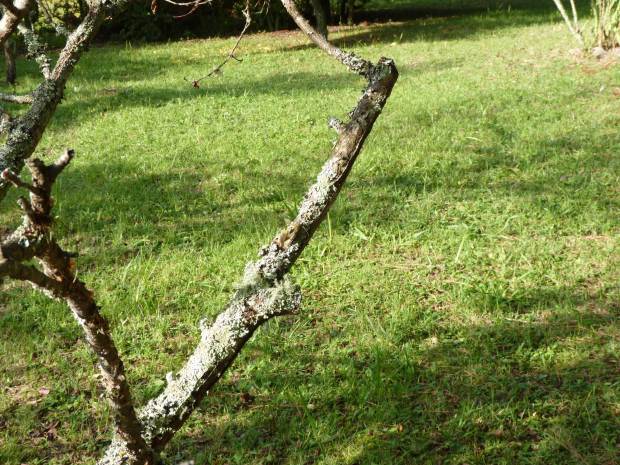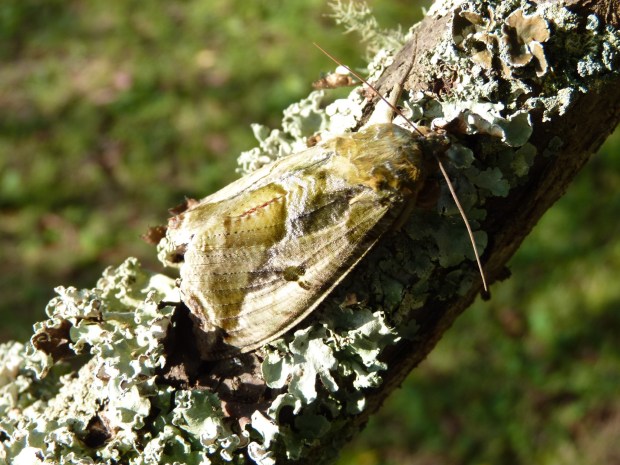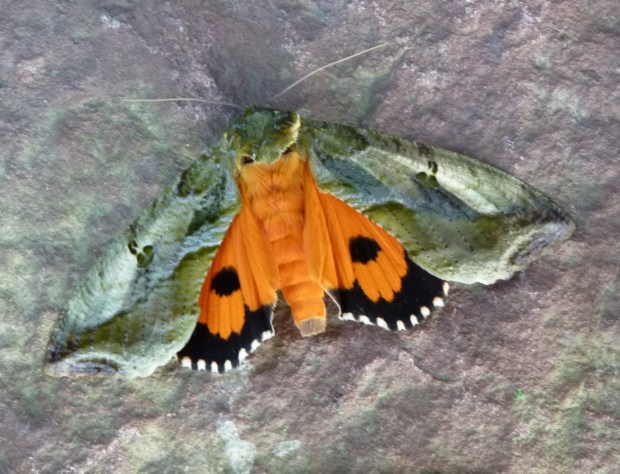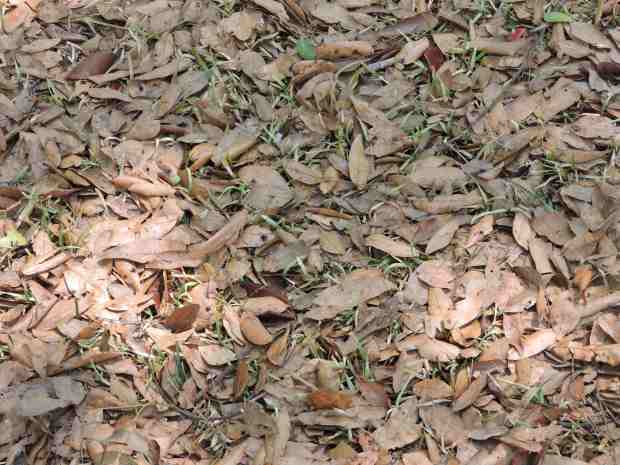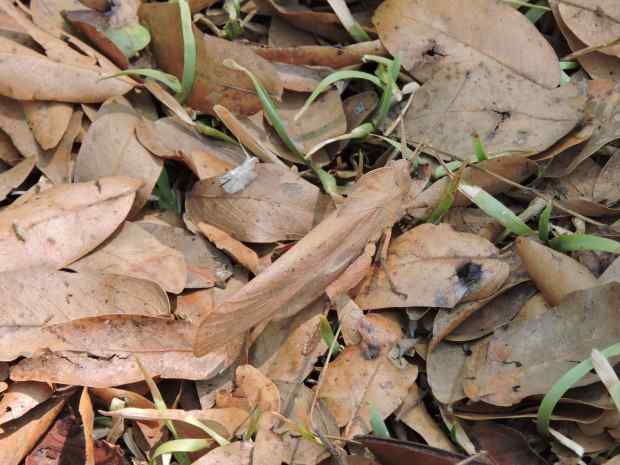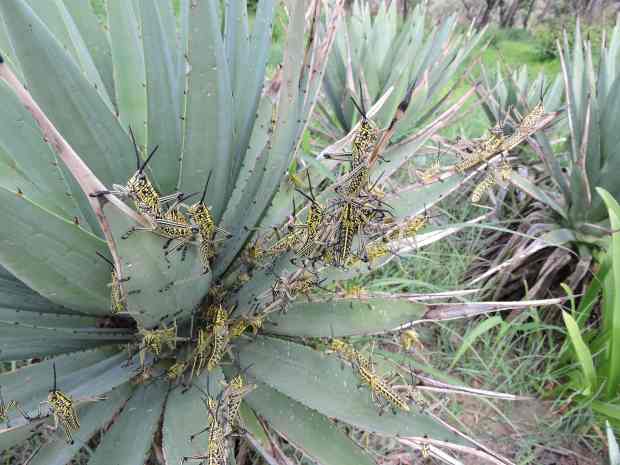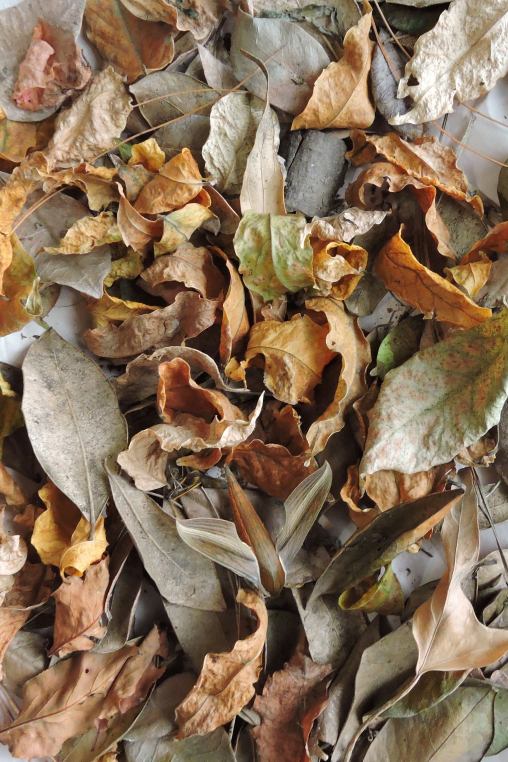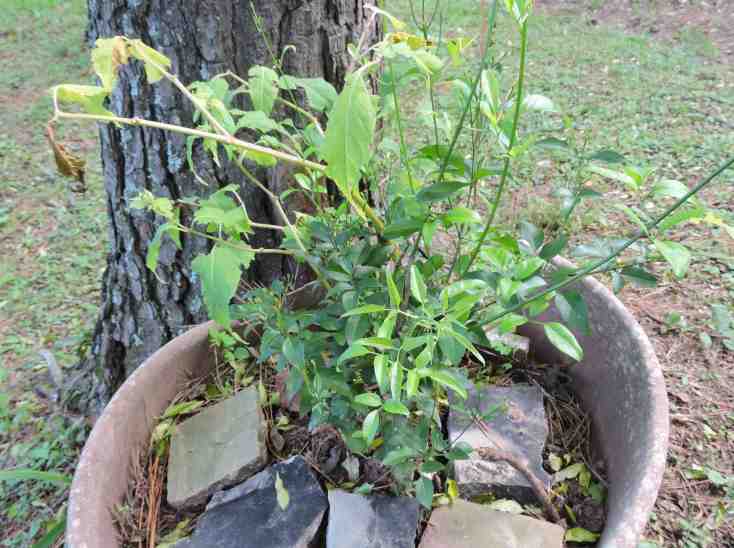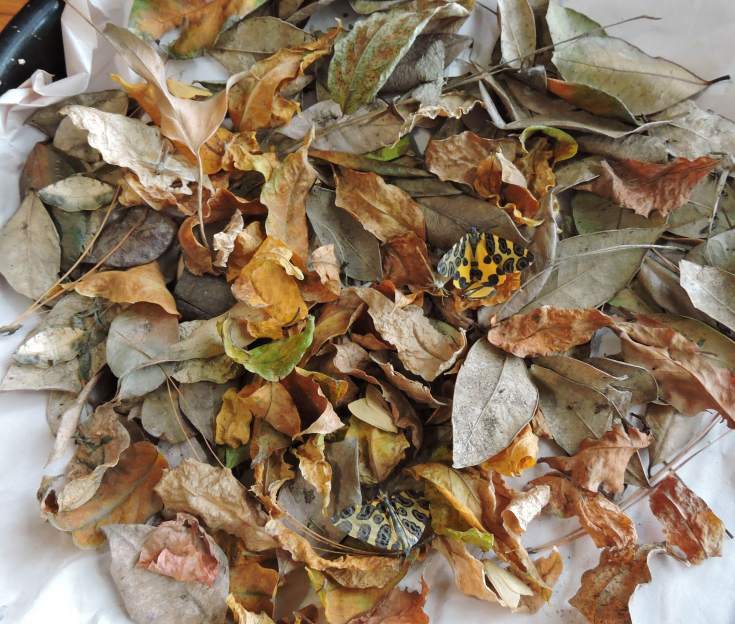Often, apparently insignificant details reveal interesting facts when sometime is spent following them up. This was -again- the case while camping at the Nsobe campsite at the Bangweulu wetlands during our prelude to attempting to find the Shoebill storks.
As -aware of the differences- the landscape reminded me somehow of that of Intona Ranch in the Transmara of Kenya in the 80’s [1], I decided to look at some of the tree islands surrounding the one we were camping at. The similarities ended as these, although around termite mounds, were composed of different trees.
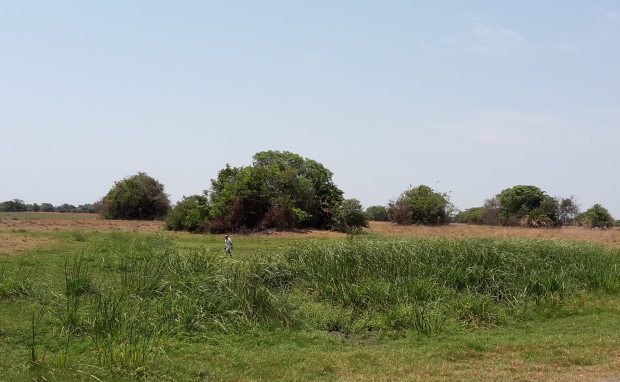
The Bushsnob walking about in the Bwngweulu wetlands looking at the tree islands.
In one of the bushes nearby I observed that some leaves were yellow while others were just their normal shape and green. A better look showed that the yellow parts were in fact an enlarged part of the leaf itself. I thought it was probably a viral or fungal infection but, in any case, I collected a few for opening up as I was curious.
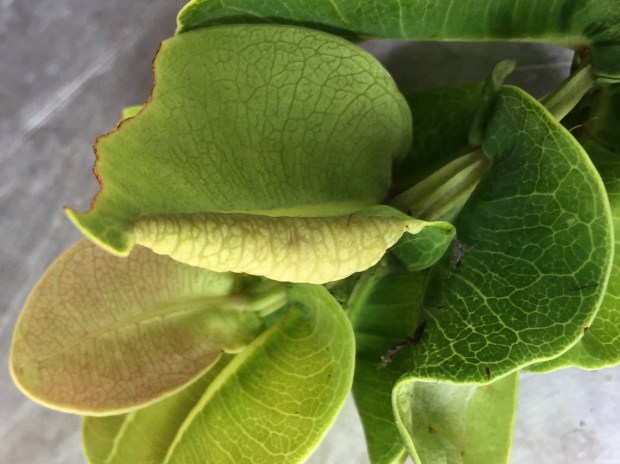
Close-up of the malformation (gall).

Similar lesions of Thryps infestation. Credit: Mr Thrips (Talk | contribs). [2]
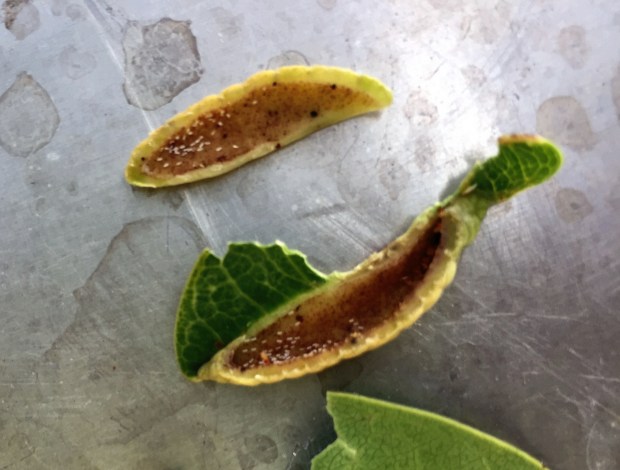
The capsules opened lengthwise to show their contents.
Luckily I had with me a “super macro’ lens given to me by my son (he likes gadgets!). This lens is applied to the cellphone camera and give you enlarged macro pictures like the ones I showed in from our bat house in Salta, Argentina [3].
Through the camera I could see an adult (black) insect, several white eggs and what looked like larvae or nymphs of the black insect walking about. In addition there was a large white insect that I assumed to be the female lying eggs according to its pulsating movement under the macro lens.

Adult (black) with nymphs and eggs.

Eggs and a nymph (reddish abdomen).
As I had no clue of what these could be, on return to Zimbabwe I resorted to the very helpful Plant Protection Research Institute of the National Research Council of South Africa as they had helped me in the past with insect identification and information. As usual, the reply came the next day and it was very revealing!
The host plant was identified as probably a Water berry tree belonging to the Syzygium (Family: Myrtaceae). It is likely to be Syzygium cordatum but I am not sure. In any case, the “leaf roll” or gall was the plant’s response to a kind of insect known as Thryps (Order: Thysanoptera), of which I have not heard before but later learnt that are important agriculture pests!
Adult Thryps have sucking mouthparts that cause damage by feeding on a plant’s fluids. The leaves respond curling tightly inwards developing the capsule I found. This structure protects the immature Thryps to develop and eventually disperse.
What I thought was an egg-laying female seems, according to the South African colleagues, a Hover fly larvae predating on the Thryps so there was also some drama going on in the dark!

The suspected female was apparently a Hover fly larvae possibly predating on the Thryps.
[1] See: https://bushsnob.com/2015/06/01/intona-ranch1/
[2] From https://thrips.info/wiki/Thrips_and_galls. Thryps and galls by Laurence Mound, CSIRO Ecosystems Sciences, Canberra.
[3] See: https://bushsnob.com/2017/04/02/homely-bats/
Acknowledgement: Elizabeth Globbelaar and Michael Stiller of the Plant Protection Research Institute of the National Research Council of South Africa provided not only identification of plant and insects but also great information without which this post would not have been written.





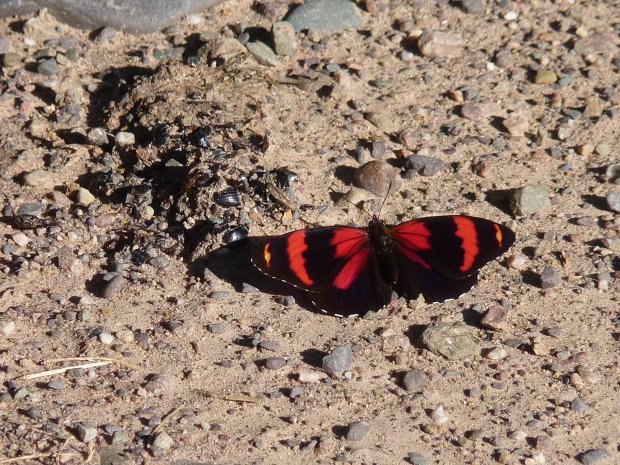

 Very recently we briefly saw a new and strikingly iridescent butterfly flying very fast and we soon lost it. Luckily the following day we found it again and, with lots of patience, I managed to take a few reasonable pictures of it. To my surprise it also carried a number: 89 (or 98) and I believe it to be Diaethria neglecta, also known as the 89 butterfly!
Very recently we briefly saw a new and strikingly iridescent butterfly flying very fast and we soon lost it. Luckily the following day we found it again and, with lots of patience, I managed to take a few reasonable pictures of it. To my surprise it also carried a number: 89 (or 98) and I believe it to be Diaethria neglecta, also known as the 89 butterfly!

 I then learnt that the numerals which appear on the underside hindwings of these butterflies are present in the twelve species of Diaethria but vary in colour and shapes, some of them do not show recognizable numbers.
I then learnt that the numerals which appear on the underside hindwings of these butterflies are present in the twelve species of Diaethria but vary in colour and shapes, some of them do not show recognizable numbers.